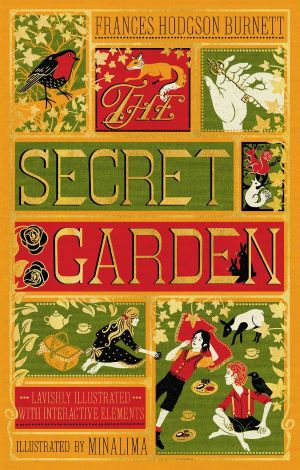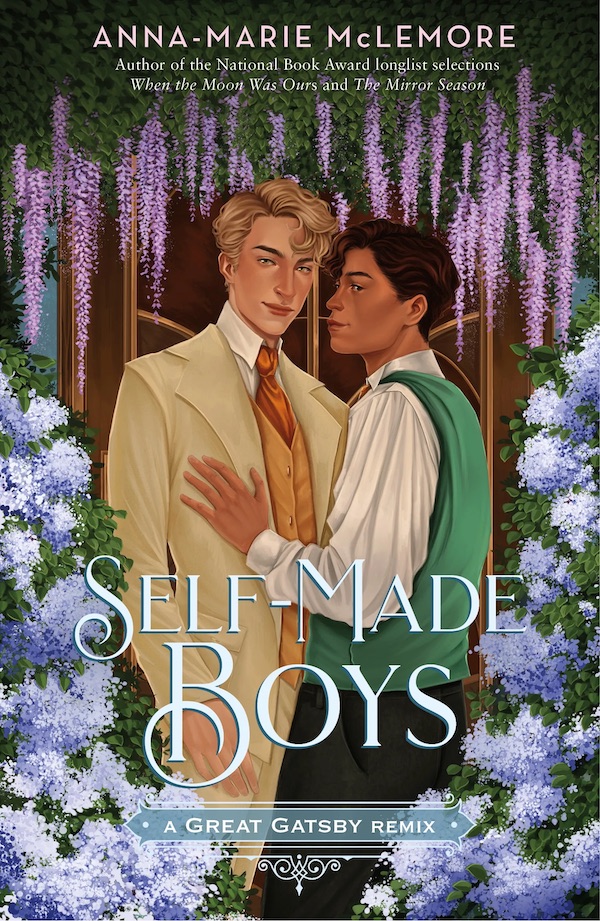
About the Book
-
Author:
- Cherie Dimaline
- Genres:
- Girl-Girl Romance
- Historical Fiction
- Voices:
- Cis Girl
- Lesbian
- Native / Indigenous
- White
Cover Story: Creepy Flowers
BFF Charm: Nay
Talky Talk: Record Scratch Remix
Bonus Factors: Indigenous Culture
Anti-Bonus Factors: Dan Scott Award for Awful Parenting
Relationship Status: Sticking To The Original
Cover Story: Creepy Flowers
In the book, Bay Bloom roses symbolize the strength of a young woman learning where she belongs, but the model’s glare and the blood-red flowers make this garden seem neither bright nor open.
The Deal:
As the title says, this book is a reimagining of the 1911 novel The Secret Garden by Frances Hodgson Burnett, which translates the story from the Yorkshire moors to a Métis community in Ontario, Canada. When Mary Lennox’s rich, neglectful parents die, she goes to live in her uncle’s manor house expecting to be as lonely as she’s been all her life. The kindness of the household staff comforts her and challenges her to question the bigotry she’s been taught, but her new home is full of disturbing secrets. Why does she hear someone crying in the middle of the night? Why has one of the manor’s gardens been locked up for over a decade? And why won’t her uncle come home?
BFF Charm: Nay

Mary gets aged up in this version in order to add romance. This doesn’t do her any favors. It’s annoying enough for a nine-year-old to stamp her foot, demand help getting dressed and hurl racist/classist insults at people trying to be nice to her, but for a fifteen-year-old, it’s even worse. To be fair, she’s only following the example of her parents, and she does outgrow this behavior eventually, but even then, I couldn’t really warm up to her. (See the Talky Talk entry below.)
Swoonworthy Scale: 5
Sophie Beausoleil, this story’s version of Dickon Sowerby, becomes Mary’s friend and later her love interest. She wears trousers, knows how to hunt and fish, speaks her mind and is proud of her Métis heritage. The two girls get into at least one fierce debate about English literature. After reading the ending of Romeo and Juliet, Sophie calls Shakespeare a “piss-poor storyteller” compared to her people, because “death is the last thing love wants.” Aside from this one memorable scene, though, I didn’t get a clear sense of Sophie as a character apart from how a love-struck Mary sees her. Like Dickon, she’s almost too good to be true.
Talky Talk: Record Scratch Remix
I didn’t care for the writing style of this book. Over-the-top phrases like “my parents’ dramatic oceanic demise” and anachronisms like “stressed out” make it obvious that this is a modern imitation of the 1900’s style, rather than the clear and simple way Burnett actually wrote. They also make Mary appear insincere during what should be a real crisis. The Beausoleils with their warm, casual dialect sound by far the most natural. This may have been the author’s intention, but it still threw me off.
Bonus Factor: Métis Culture

Dimaline draws on her own background as a member of the Georgian Bay Métis Nation, whose culture blends Indigenous and European traditions. The Beausoleil family speaks their own form of French that Mary asks to learn, similar to how she studies Yorkshire English in the original. The scenes in which Sophie, Flora and the others use their humor and resilience to endure their white housemates were some of the best in the book.
Anti-Bonus Factor: Dan Scott Award For Awful Parenting

Mary’s parents ignored her for most of her life, except when her mother had something to criticize. Mr. Craven isn’t even in the same country for most of the story, making him even more negligent than the original, who at least asks Mary if she needs anything. His second wife Rebecca (who doesn’t appear in the original) is a classic evil stepmother who bullies the Beausoleils, tries to set Mary up with an arranged marriage, and may or may not be poisoning Olive (the counterpart of Colin). The only parents in this book who aren’t awful are either off the page or dead.
Relationship Status: Sticking To The Original
I have to admit, I liked the concept of this book better than the reality. I might just be the wrong kind of reader, but I’d rather stick with Burnett, thanks all the same.
Literary Matchmaking

For the story that inspired this one, read The Secret Garden by Frances Hodgson Burnett.

For another queer Indigenous girl’s story, read The Summer of Bitter and Sweet by Jen Ferguson.

For another remixed classic, read Self-Made Boys: A Great Gatsby Remix by Anne-Marie McLemore.
FTC Full Disclosure: I received no compensation for this review. Into the Bright Open is available now.